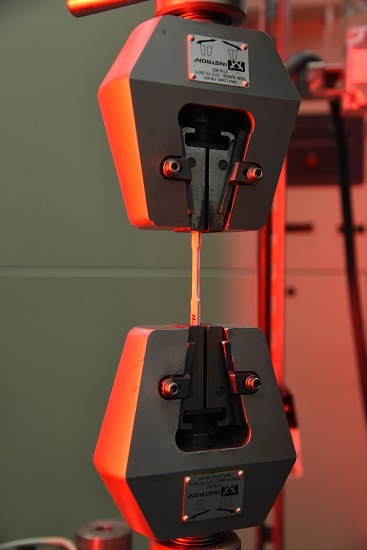 Among our successes was work to develop a Code Case to qualify the nickel-based Alloy 617 for Section III, Division 5 “Rules for Construction of Nuclear Facility Components, High Temperature Reactors” of the American Society of Mechanical Engineers Boiler and Pressure Vessel Code. Only five alloys are currently qualified for elevated temperature nuclear construction. The last material added to this section of the Code was in the 1990s, and none of the qualified materials is a nickel-base alloy. The upper temperature limits for materials currently in Section III Division 5 are insufficient for gas-cooled nuclear reactors designed for process heat or hydrogen generation applications. Thus qualification of Alloy 617 for use up to 950°C enables new applications for nuclear energy systems.
Among our successes was work to develop a Code Case to qualify the nickel-based Alloy 617 for Section III, Division 5 “Rules for Construction of Nuclear Facility Components, High Temperature Reactors” of the American Society of Mechanical Engineers Boiler and Pressure Vessel Code. Only five alloys are currently qualified for elevated temperature nuclear construction. The last material added to this section of the Code was in the 1990s, and none of the qualified materials is a nickel-base alloy. The upper temperature limits for materials currently in Section III Division 5 are insufficient for gas-cooled nuclear reactors designed for process heat or hydrogen generation applications. Thus qualification of Alloy 617 for use up to 950°C enables new applications for nuclear energy systems.
Use of Alloy 617 for application up to 425°C has been approved for Subsection HB, Subpart A, Class A “Metallic Pressure Boundary Components for Low Temperature Service.” A second code Case to allow use of the alloy up to 950°C for up to 100,000 hours in the time-dependent material property regime has successfully passed the first round of balloting and is continuing in the approval process.
This achievement is the culmination of an approximately 8-year effort that involved material testing and characterization, acquisition and vetting of historical data, and analysis of the resulting large data set to develop ASME-allowable stress values.
Our capabilities include a high-temperature materials test loop that This test loop circulates high temperature helium (up to 1200°C) past metal alloy materials while controlling part-per-million concentrations of H2, CH4, CO, CO2 and water vapor for up to 2,000 hours. This work is developing an understanding of how nickel alloy materials intended for use in the Very High Temperature Reactor (VHTR) respond to long term exposure of oxidizing/reducing and carburizing/decarburizing helium environments. Additional capabilities include:
Nine electro mechanical load frames
- Eight with 100-kN capacity
- One with 150-kN capacity
Four servo-electric frames (100-kN capacity)
- DPD crack growth monitoring system
- Agilent 7890A GC system to monitor gas in and out of chamber
Eleven servo-hydraulic frames
- One 5/50-kN
- Eight 100-kN
- One 500-kN
- One 1-MN
- Environmental chamber with high-vacuum and controlled chemistry
- Agilent 7890A GC system to monitor gas in and out of chamber
- Varied extensometers and gripping methods available
21 different creep frames with up to 20:1 lever arrangement
Two INL rebuilt stress-relaxation systems
Charpy Impact Tester, 325-Nm capacity
Gleeble System with heating rates up to 1000 degrees C/sec
Corrosion / Stress / Cracking
- One BWR water chemistry loop attached to Ti autoclave on a servo-electric load frame**
- One PWR water chemistry loop attached to a stainless steel 316 autoclave on a servo-hydraulic load frame**
- One PWR water chemistry loop attached to a stainless steel 316 autoclave on an Interactive Instruments 5K servo-electric load frame shielded with lead bricks**
** (associated with the Nuclear Science User Facilities based at INL)
- Q-UV accelerated weathering chamber, UVA and UVGB for testing materials/coating/resistance
- Programmable Q-Fog cyclic corrosion chamber (ambient to 70 degrees C, 100% humidity, heat, dwell, humidity, salt spray fog cycles)
Five Programmable Environmental Chambers
- Approximately 5000-L total capacity
- Temperature ranges from -50 degrees to 180 degrees C
- Capability to load hundreds of specimens simultaneously
Voltammetry and EIS Capability
- Solatron and Gamry Hardware


